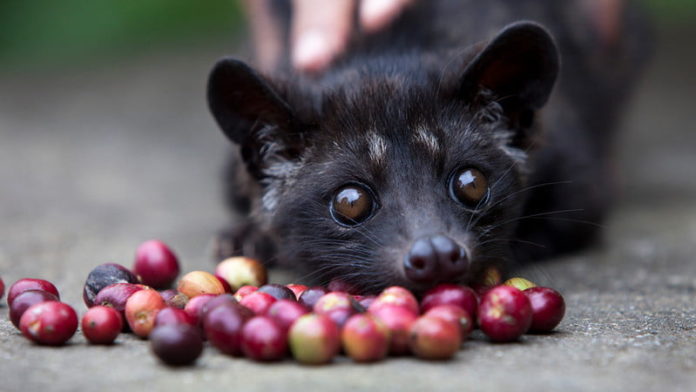.
You’ve heard the intriguingly gross stories about civet coffee (kopi luwak coffee). Coffee that’s made from beans found in the poop of a cat-like animal living in an exotic location. But, come on, is this a real thing? And, is it really the best coffee in the world?
In this post, you’ll learn all about civet coffee, the controversy surrounding it, and 14 facts about the civet itself.
All About Kopi Luwak / Civet Coffee
You may be wondering why this kind of coffee has two names.
Well, “kopi” is the Indonesian word for coffee, and “luwak” is what the Asian palm civet is called in Sumatra. The first people to start drinking this kind of coffee called it luwak, or kopi luwak.
In North America, it’s often called civet coffee. (Some people also call it cat poop coffee.)
Before we go into more detail about civet coffee, let’s watch a short video to learn a little about the process and the controversy that has developed.

I enjoyed the beginning of that video. It was sweet to see the cute little civet eating the coffee cherries. But seeing the animals caged and forced to eat them wasn’t so nice.
Let’s dig a little deeper, and maybe you’ll have some interesting conversation tidbits to share the next time your friends start talking about civet coffee.
What is civet coffee?
Civet coffee is a type of coffee that’s made from coffee beans which are excreted whole in the droppings (excrement/poop) of the Asian palm civet.
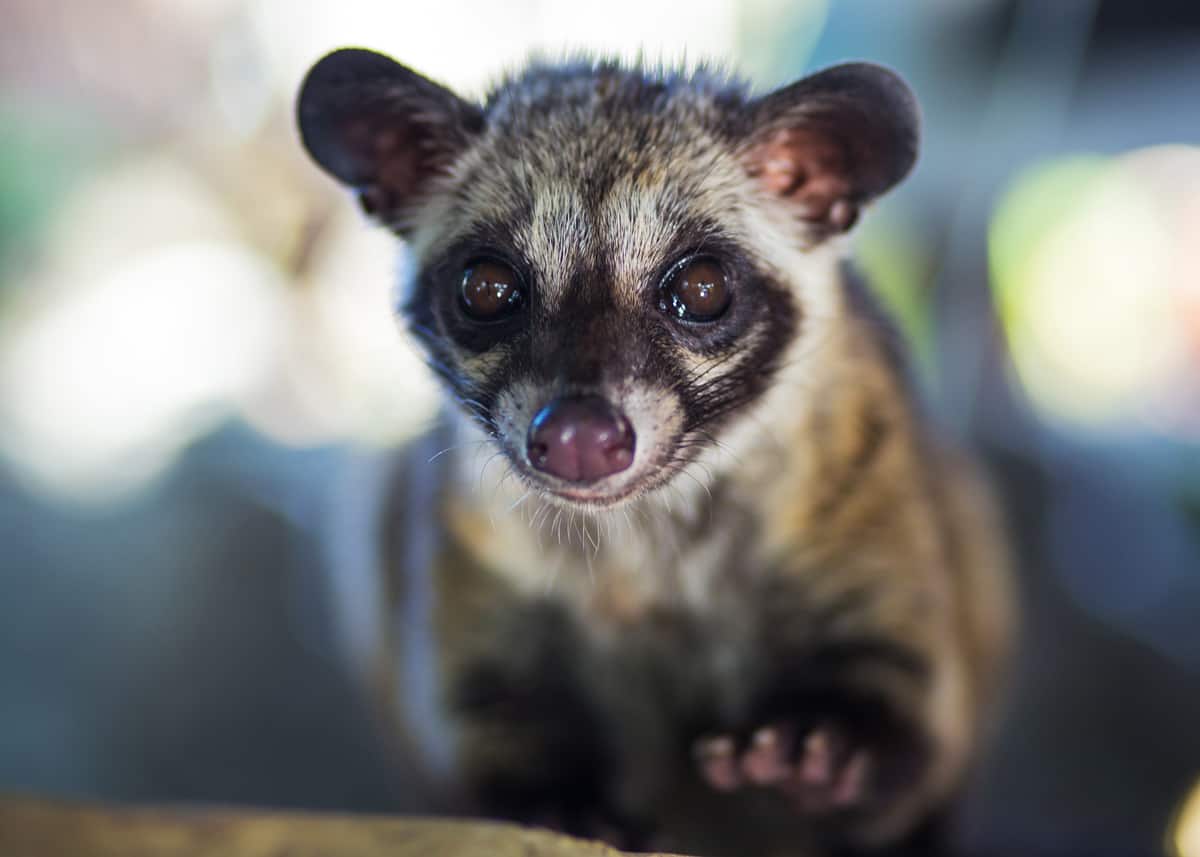
The Asian palm civet
The type of coffee depends on the variety of beans the civet eats. It may feed on beans from the arabica coffee plant, the robusta, or any other coffee plant available to it. Civet coffee has more to do with the process it goes through, although many people prefer the flavor when it’s made from excreted arabica beans.
The droppings are collected and the coffee beans are washed, roasted, ground and then brewed to produce what has become the world’s most expensive coffee.
Why is Civet Coffee So Expensive?
How much does civet coffee cost? That can depend on a few things. How are you buying it, by the pound or by the cup? Is it from wild, or caged civets? What’s the supply and demand like where you live?
For the sake of simplicity, let’s talk about prices for civet coffee in the U.S.A.
For a cup of civet coffee in a cafe, you could pay around $35-$80 US.
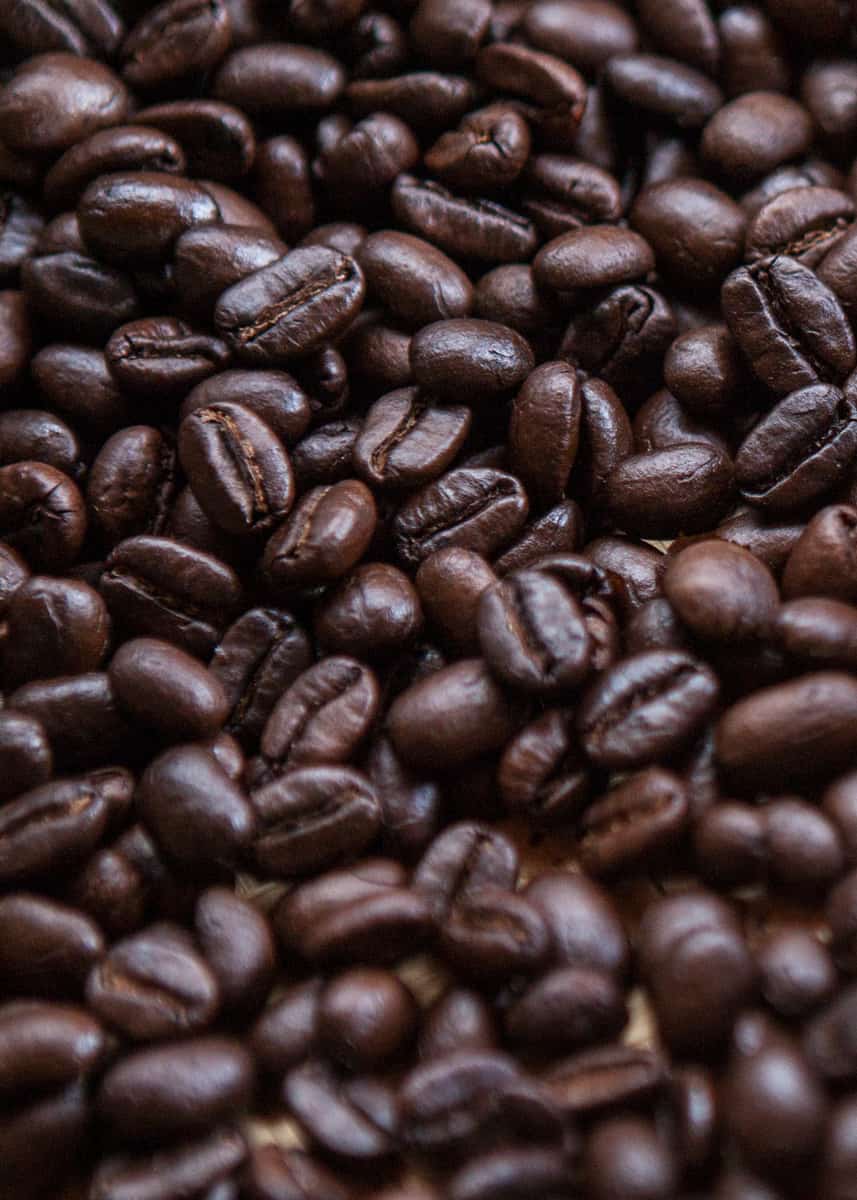
Roasted kopi luwak beans
Civet coffee is so expensive because – who wants to gather cat poop and pick coffee beans out of it? Not me, you would have to pay me a lot of money to do that, I mean a lot!
But seriously, the high price seems to come from the “specialty” nature of the coffee. It started off being collected from the droppings of wild civets. That would take a long time to find and to accumulate.
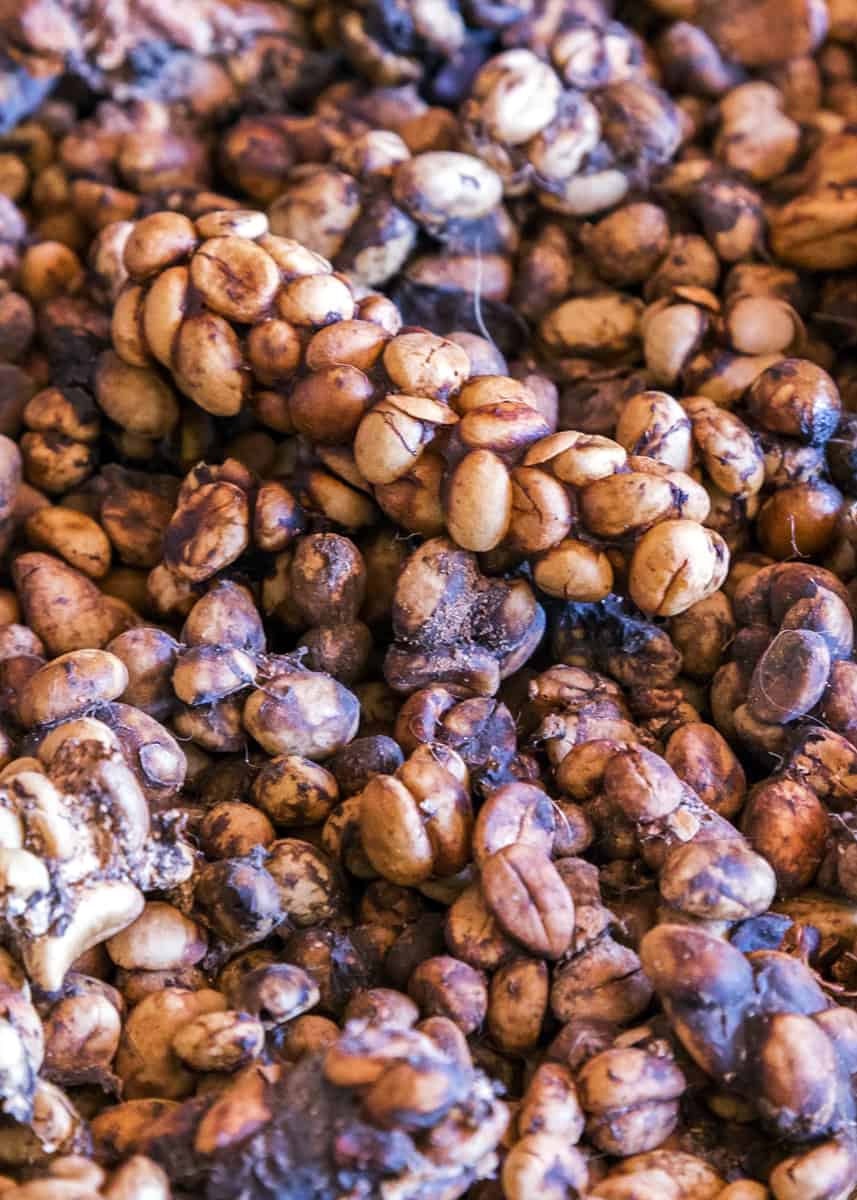
civet droppings
There is also the fact that some people believe it’s a superior coffee because of the process it goes through inside of the civet.
Sounds pretty sensational, right? So, the rarity of supply and the sensational nature of the “quality coffee” claims result in a hefty price tag.
Prices have gone down recently because of the supply from the civet farms that have been created in response to the demand for this kind of coffee.
Where does civet coffee come from?
Kopi Luwak coffee comes mostly from Southeast Asia and sub-Saharan Africa. And the beans are collected from the droppings of an animal called a civet.
The coffee used to come from the droppings of wild animals, but now the vast majority comes from civet farms.
Some people are claiming to be able to mimic the “fermentation process” through other means.
How is civet coffee made?
The Asian palm civet eats ripe coffee cherries. After a digestion process of around 24 hours, the undigested coffee beans are excreted in the civet’s poop.
The beans are collected and washed. At this time any remnants from the coffee cherries are removed.
The beans are then dried, roasted, ground and brewed.
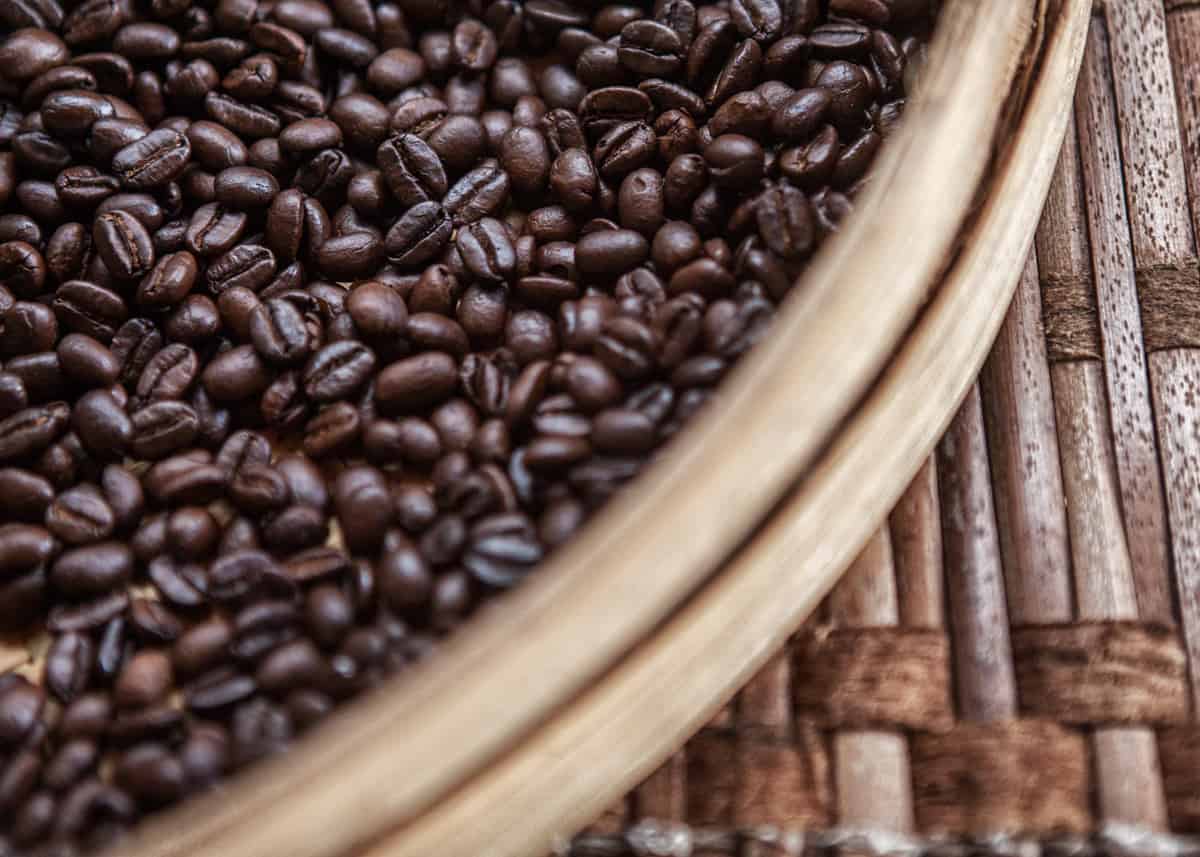
Roasted civet coffee beans
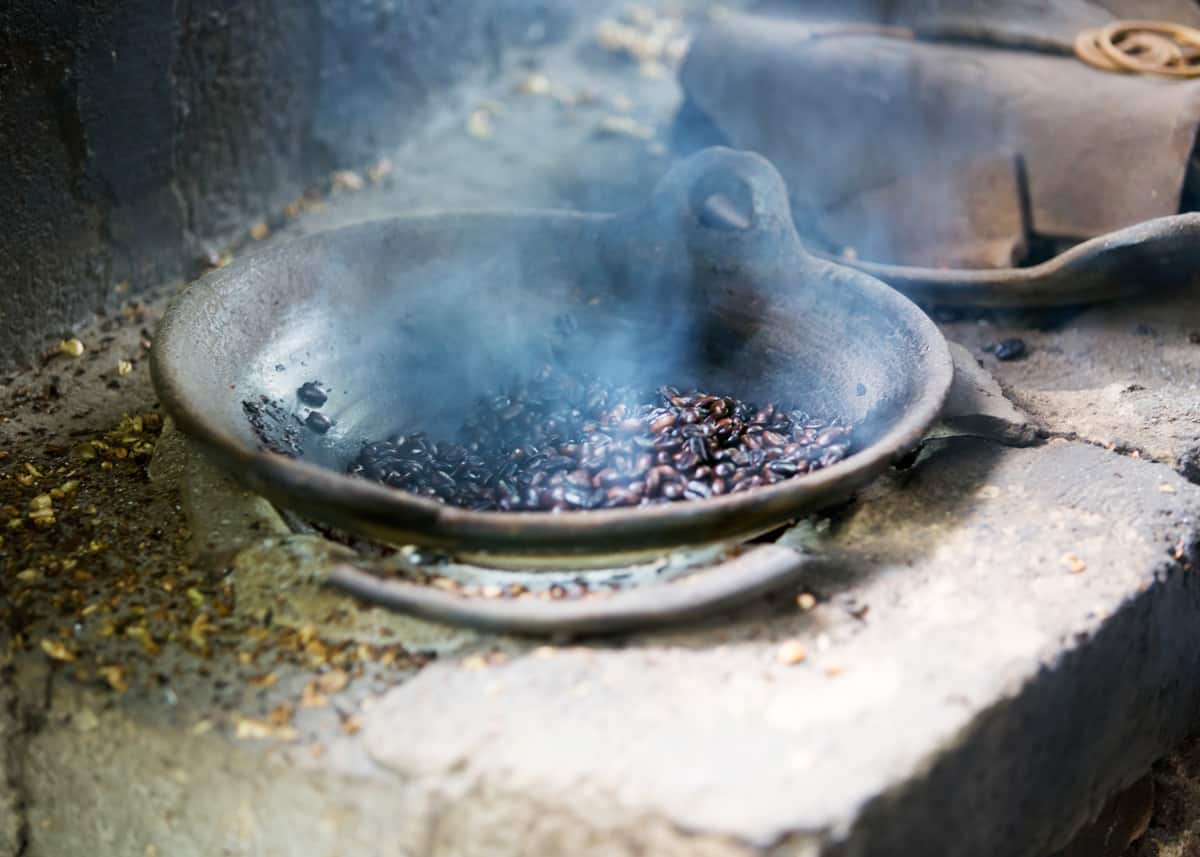
Roasting cat poop coffee beans
Is civet coffee safe to drink?
The coffee is said to be safe to drink because the germs would be eliminated during the washing and roasting process.
Is it safe for the animals? That’s another story. It depends on how the animals are treated. For me, this is one of the major factors (not to mention the “poop” aspect) in deciding if I would drink it or not. The fact that it’s practically impossible to know if the animals are wild, or caged is enough for me to say no to civet coffee.
Why would anyone drink cat poop coffee?
As the story goes, the first people to drink civet coffee were workers on the coffee plantation. They were not allowed to make their coffee from the beans processed on the plantation, so they would gather the beans from the droppings of wild civets.
They enjoyed the coffee, so word spread until their Kopi Luwak became famous.
Today people drink it either because they can’t resist taking part in the bizarre nature of the civet coffee story (and expensive bragging rights that go with it) or because they taste it – like it better than other coffee, and continue to drink it.
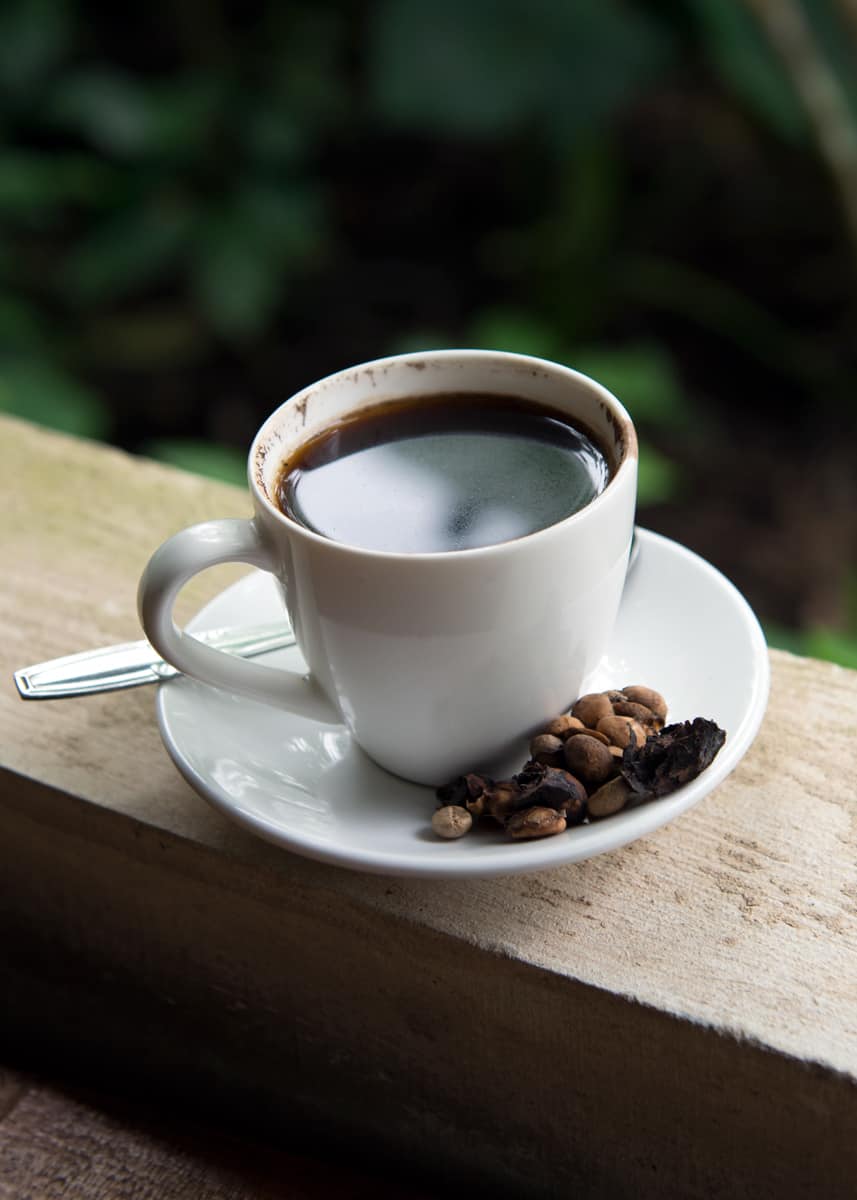
The Kopi Luwak Coffee Controversy
There are a couple of aspects to the kopi luwak controversy.
- Treatment of the animals
- Flavor
According to this article by National Geographic it’s practically impossible to tell if civet coffee is coming from wild civets. The problem with this is that civets require a large amount of space (around 17 sq kilometers) to be happy and healthy. They are also solitary, territorial animals, so they don’t do well crammed together in small spaces (they fight, and get sick). On top of that, many of the farms mistreat the civets.

Caged Asian palm civet
When it comes to the taste of kopi luwak, you may be surprised to hear that the experts don’t taste anything super special when they drink kopi luwak, and that in coffee cupping it has come in at the bottom (which in not good). This review by Tim Carman for the Washington Post seemed to agree. This may be because the digestive process reduces some of the acidity (a pleasing acidity, like in wine) in the coffee.
The only positive thing I could find is that some people say it tastes a little more mellow and that the digestive process may reduce some of the caffeine content in the beans.
But there are friendlier (to the animals specifically) and less expensive ways to get a rich, mellow, caffeine friendly cup of strong coffee.
This coffee seems to be largely a gimmick in the coffee world.
14 Interesting Facts About the Civet (Paradoxurus hermaphroditus)
Let’s learn a little more about the cute little civet that is at the heart of this coffee controversy.
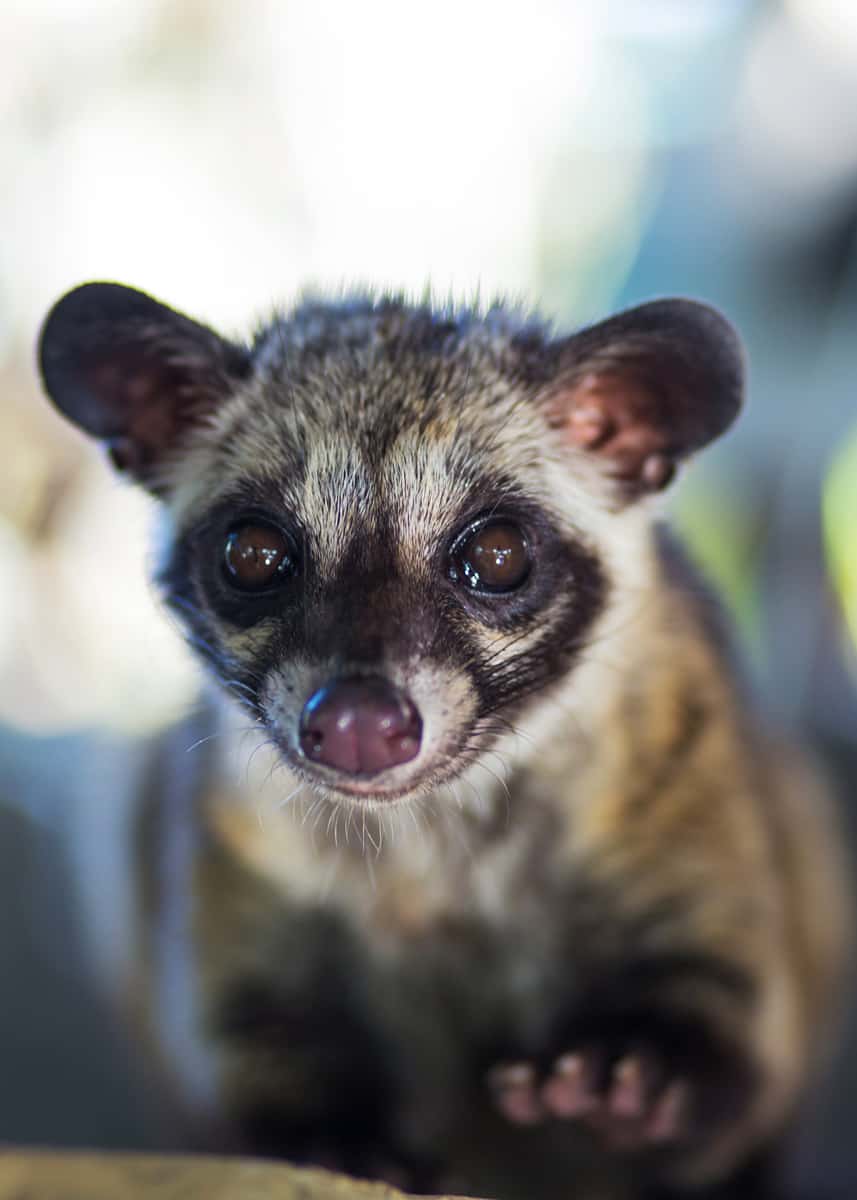
14 Facts about the Asian Palm Civet:
- The civet is a nocturnal animal. It comes out at night to feed, much like a raccoon. It makes loud noises, climbs around and poops on the roof of peoples houses. Because of this, it’s seen as a pest in many areas.
- This little critter is an omnivore. The civet eats ripe coffee cherries, mangoes, rambutan, and other fruit. It also eats insects and some small mammals.
- They are largely solitary. Civets are solitary and territorial, usually only coming together to mate.
- They are also known as a toddy cat. The civet gets this name because it feeds on palm flower sap. This sap is fermented to make a sweet liquor called toddy.
- The civet is native to Cambodia, the Philippines, Bangladesh, Myanmar, Nepal, India, Singapore, Thailand, Vietnam, Brunei Darussalam, Bhutan, China, Sri Lanka, Sarawak, Peninsular Malaysia, Sabah, Laos, and the Indonesian islands of Kalimantan, Sumatra, Siberut, Java, and Bawean.
- It’s super cute. The Asian palm civet is covered in coarse black and light gray fur. They may also have some white and tan markings. The main body coloring is light gray with stripes or spots of black, its face is usually black with light gray markings on its forehead and around its eyes. The ears, legs and long tail are usually black.
- The civet is about the size of a large cat. It weighs between 4 – 11 pounds (2 to 5 kg) and is around 53 cm (21 in) long. Its tail is around 48 cm (19 in) long.
- It’s stinky. The civet can spray kind of like a skunk. When it’s scared or upset it secretes a strong unpleasant smell from its anal scent glands.
- There is some concern about a civet population and treatment because of the creation of civet farms. The civets on the farms have been captured from the wild, reducing their numbers. It remains to bee see what effects this will have on the civet population in areas with heavy farming. They are also treated badly on many of the farms.
- They live for around 15 – 20 years.
- They are not feline. Although called a cat they are related to the weasel and the mongoose
- They give birth to up to four babies at a time.
- They spend most of their time on the ground but will climb for food or when they feel threatened.
- Kopi luwak comes from the civet. Kopi luwak coffee is the name of the coffee made from the beans found in the poop of the Asian palm civet.
Here’s another short video so you can see the civet in its natural habitat.
Would You Drink Cat Poop Coffee?
Have you tried civet coffee? Would you?
This doesn’t sound like the world’s best coffee to me. It may be the most expensive, but that’s not enough to sell me on it.
And honestly, it doesn’t sound all that appealing to me. Especially because of the uncertainty of the treatment the animals receive.
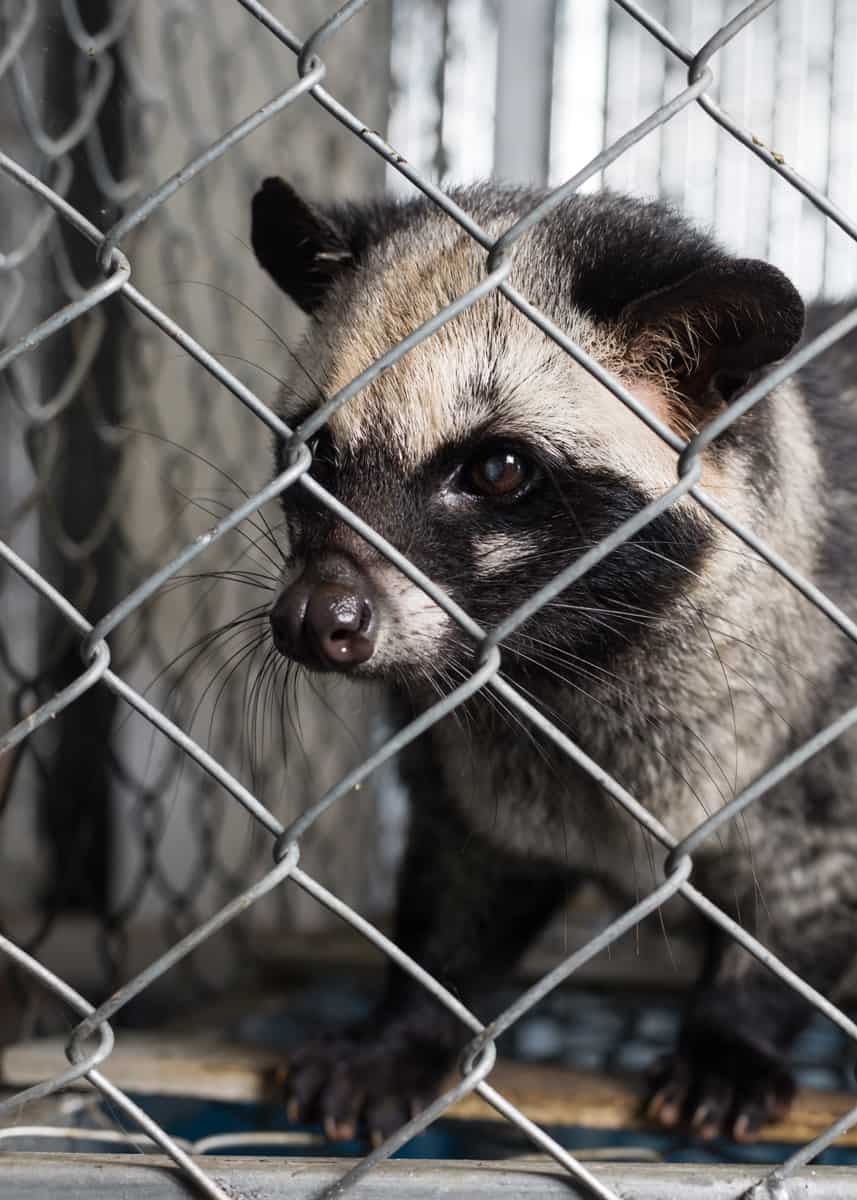
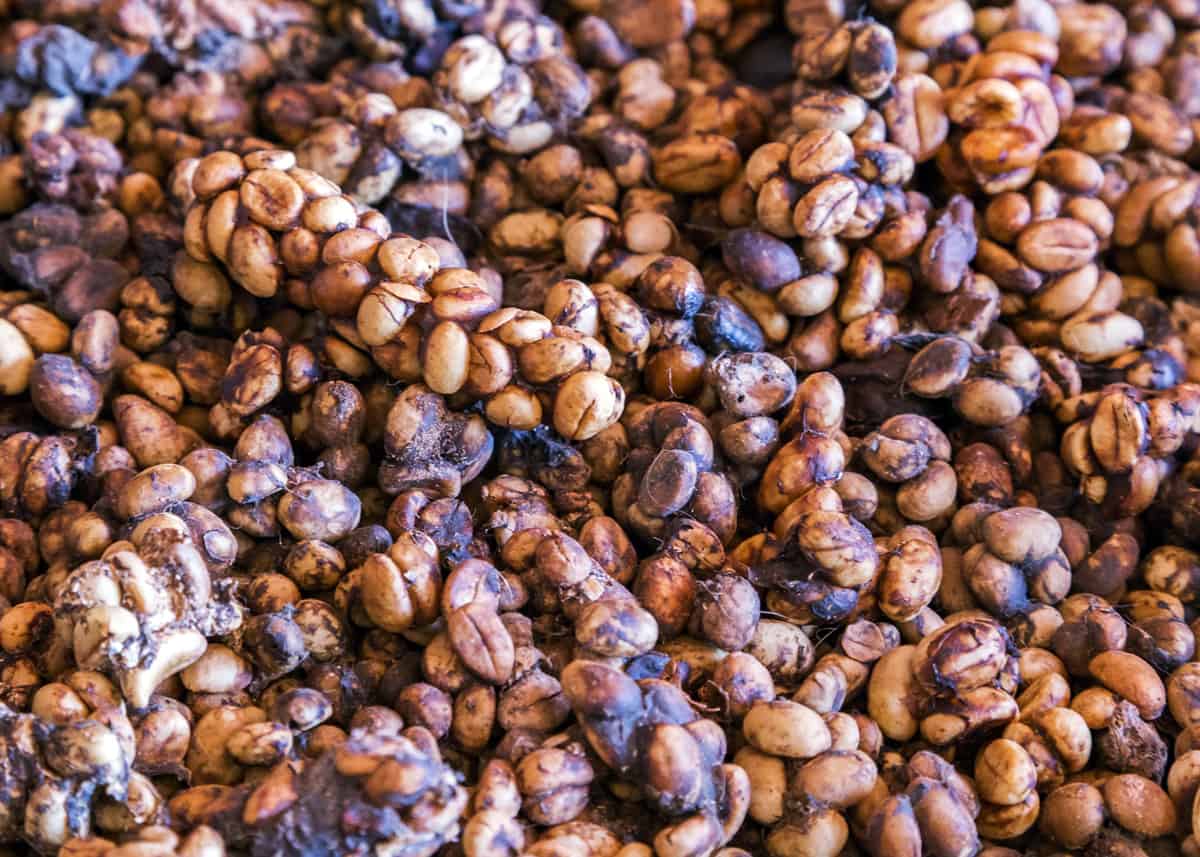
This is a hard image to get out of my mind, poop – yuck!
Anything and everything about poop turns off my appetite. I’ll be sticking to the poop-free non-predigested varieties of coffee.
The world’s most expensive coffee, made from poop of civet cat, is made in India
India, Asia’s third-largest producer and exporter of coffee, has started producing the world’s most expensive coffee, made from the poop of civet cat, on a small scale in Coorg district of Karnataka.
Here in the country’s largest coffee-growing Karnataka state, a start-up firm, Coorg Consolidated Commodities (CCC), has made a humble beginning of making the luxury coffee on a small scale and has also decided to open a cafe to serve the brew locally.
“Initially, 20 kg of civet coffee was produced. After establishing the start-up firm, 60 kg was produced in 2015-16 and 200 kg last year. We hope half a tonne production from the new crop to be harvested from October,” Narendra Hebbar, one of the founders of CCC, told PTI.
The exotic coffee is being sold locally under the brand ‘Ainmane’, he said that the company has only one outlet at Club Mahindra Madikeri Resort where it sells locally produced coffee, spices and other products.
Hebbar also shared that the company sources the animal poop from plantations located close to forest from where civet cats come to eat the ripest coffee bean cherries.
“Civet cat eats flesh of the coffee cherries and not the bean. Natural enzymes in civet’s stomach enhances the bean flavour and that’s why this coffee is unique,” he said.
Now, farmers are understanding the importance of this coffee and “we produce it in natural form unlike other countries where civet cats are caged and forcefully fed with coffee beans,” he noted.































